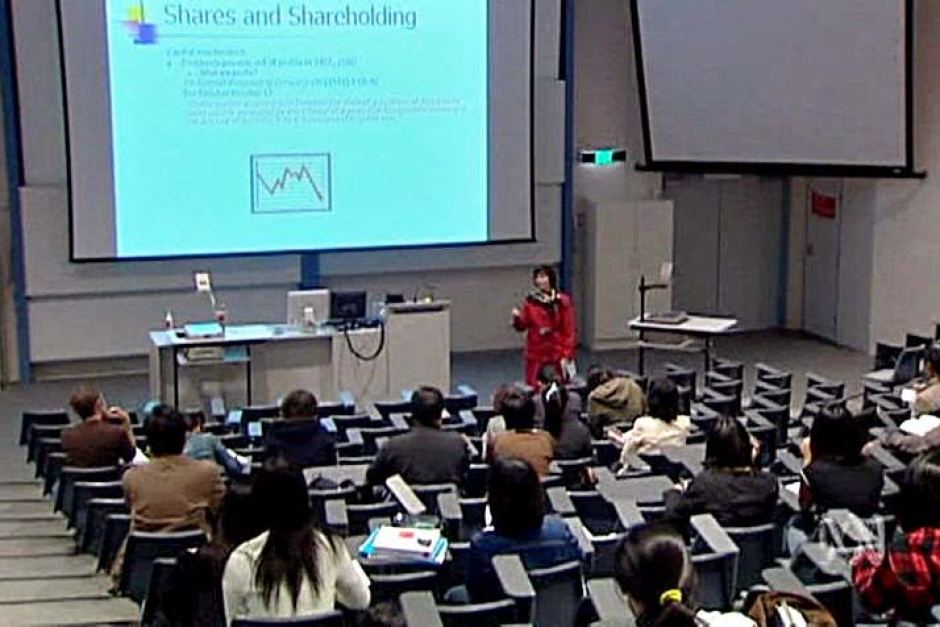The Need for Diversity in Higher Education

By Robert Wood
There is space for diversity in the university context in Australia. I do not say this in the way Christopher Pyne has, or even of people all the way back to John Dawkins. When I say diversity I do not mean it as a sneak attack argument for de-regulation. We need far greater public investment in higher education even as we need to sharpen the differences between specific institutions.
This is so they do not congregate around some mediocre average of teaching and research. The vast majority of universities in Australia have student populations between 25,000 and 50,000 students. Charles Darwin University is the smallest with 11,000 and Monash tops the scale with 64,000. Although this is simply one measure, it means that we do not have an adequately diverse landscape at a very basic level. The social conditions in which people can produce research and most importantly teach students, means that there is a tendency to homogeneity.
The Australian National University has similar student numbers to Harvard, Oxford and Cambridge and there was a self-conscious attempt to make this Australia’s finest university when it was first established. But in precious contrast to the elite universities overseas, it has little land and a very small endowment. This is where Australian higher education simply cannot compete as it presently stands, which is why we continue to languish in ranking systems worldwide. One might want to interrogate those systems in the first place, but one might also want to ask: what is the language of our shared inheritance that means we can offer the best education in this place?
In answering that question, we might not need to create new things, but we might need to retrofit that which already exists. This might mean the conscious recalibration of student populations so to create universities that offer different experiences, precisely because young people desire that. Using the United States as an example, Williams College has 2000 students as does Amherst and Swarthmore. Wesleyan has a mere 600. Each of these places offer some of the best undergraduate educations in the liberal arts anywhere in the world. Students in Australia want those experiences on native soil. And the government needs to lead the way to make that happen. We need then a handful of elite liberal arts and sciences colleges that have a small selective enrolment and focus on Australian subjects.
This is only one possibility of diversification in the higher education sector. As the ALP suggested in the previous election, there is the possibility of higher education institutes. University of Canberra Vice Chancellor Stephen Parker suggests, these would ‘bridge vocational education and training (VET) and higher education. These bodies would provide highly practical, industry-connected courses taught by staff whose focus does not include research per se.’
Undoubtedly the appeal of these institutes is because of the monotonous uniformity of university education coupled with the appeal of reaching out to students who do not want to engage with the academic rigors of a bachelor degree. It is more difficult to ascertain what the practical realities of this are and what demographic they would serve. Perhaps a more likely outcome, and a simple one at that, is to retrofit and contain the existing institutions, allowing them to service a greater population through diversification. This would be a genuine attempt at making TAFE and university have a wider appeal precisely because they can individually become far more specialized.
What that might engender is a distinct national culture, where one may indeed think little of traveling to the University of Sydney for history rather than assuming that the homogenous uniformity of any Group of Eight university could stand in for any other, which means very few students leave their capital cities. In other words, Australian higher education conceives of itself as being a states’ based market rather than a national one precisely because of the lack of student movement and the geographic distribution of excellence.
What that means is the sector is smaller than we think and the dream that Australia has a truly elite university, when measured against ‘world’ expectations, will inevitably fall short. Learning to evaluate our own institutions, and from the evaluation learning to respond to our local circumstances including the problems that are already here, is part of being a republic in a full and meaningful way.
Being an activist state means we must intervene, particularly in the educational opportunities that are offered to the disadvantaged.
 Robert Wood’s writing has been published in numerous literary and academic journals. He has interned for Overland, edited for Peril and Cordite, been a columnist for Cultural Weekly. At present he works for The Centre for Stories.
Robert Wood’s writing has been published in numerous literary and academic journals. He has interned for Overland, edited for Peril and Cordite, been a columnist for Cultural Weekly. At present he works for The Centre for Stories.









1 comment
Login here Register here-
Robert G. Shaw
Return to home pageRobert, hi.
A fine article.
A quick thought: I don’t think comparisons to Williams, Swarthmore, and Amherst, are particular helpful. Williams, for example, is as you rightly say one of the best liberal art colleges on the planet. My understanding is that it is the best, holding that rank for over a decade. It also possesses an endowment in the billions, and has a yearly tuition fee of 60K plus.
It is also small, only 2000 odd students.
Each of these factors alone – cost, size, endowment – would severely jeopardise your hopes of such an institution here. Put all three factors together and that hope turns to dust.
As a small nation we simply cannot compete with say, the top twenty US uni’s; in these terms (of scale, endowments, quality of teaching staff).
Another risk, and to me a very real risk, is the slow but sure transformation of our uni’s into graduate production lines for overseas fee paying students. It would seem that their dollars are more valuable, in that never ending race for greater funding, than the institutions academic standards.
That, to my mind, is the true marker of our educational quality, and the degree of our educational prostitution.
I have heard horror stories, as I’m sure you have, that detail this disgraceful practice.
I would see somehow addressing this issue as first, among many, in the struggle to regain both reputation and standard.
Unfortunately i am not very optimistic and I don’t view either political party as placing any great store in the increasing value of having world class universities here.
Again, an interesting article. Thanks.